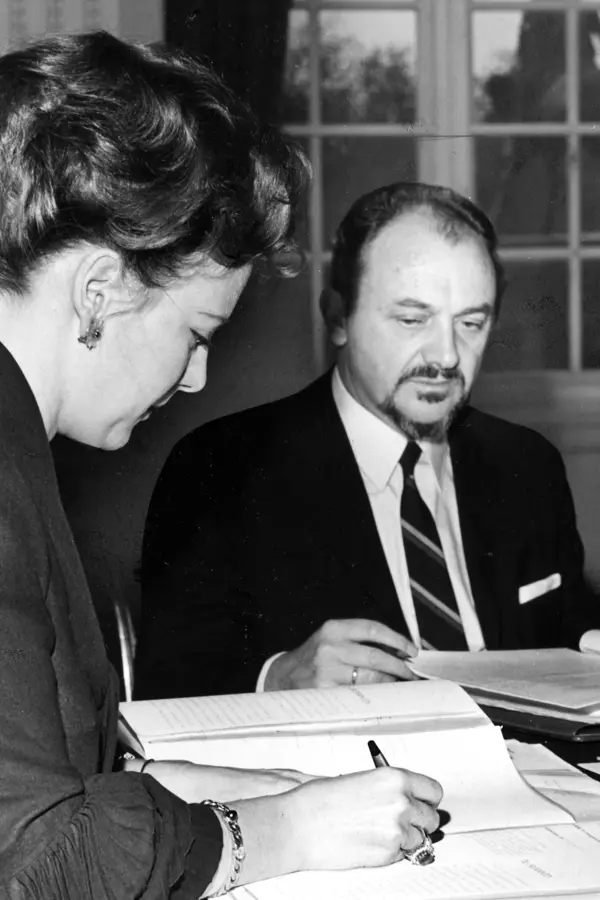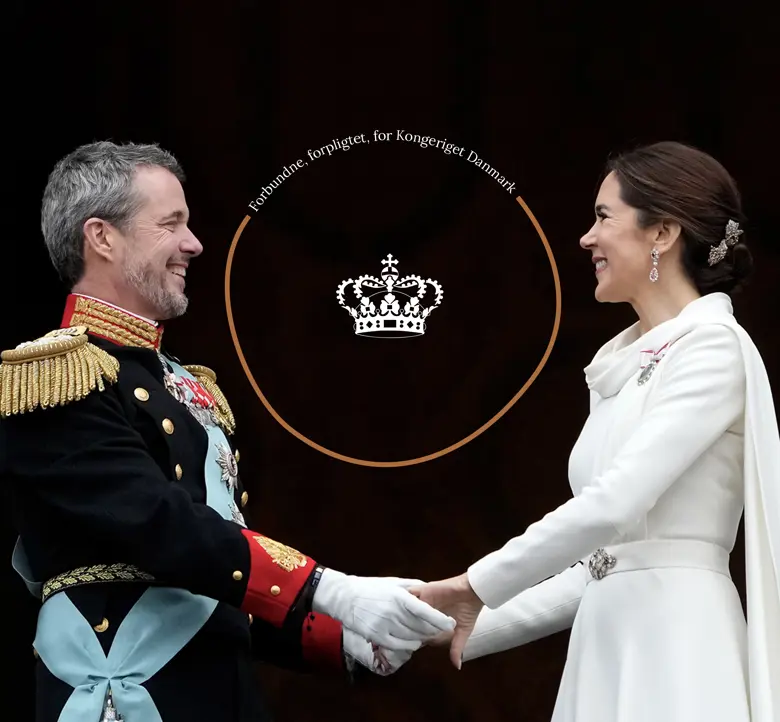Denmark through 50 years

Since January 1972, there have been 24 different governments and, in all, 9 prime ministers. If one counts back to time when the heir to the throne Princess Margrethe entered into the Council of State on her 18th birthday in 1958, 6 governments and an additional 3 prime ministers can be added to the list. Poul Nyrup Rasmussen (b. 1943) was the first of these prime ministers who was younger than HM The Queen. Helle Thorning-Schmidt was the first woman in the post. The current prime minister, Mette Frederiksen, was born five years after The Queen entered into her duties.
The crucial point on the political agenda in 1972 was Denmark’s relationship to the European Economic Community. In a referendum on 2 October 1972, 63.4 percent of the voters said yes to Denmark’s accession to the EEC – now EU. That went into effect on 1 January 1973. On 1 October the same year, abortion on demand was introduced in Denmark.
In December 1973, the so-called Landslide Election meant that the number of parties in the Danish Parliament doubled from five to ten. Three new parties, the Centre Democrats, the Christian People’s Party and the Progress Party attained representation together with Denmark’s Communist Party and the Justice Party. The old political parties, which were based on group interests, were returning in favor of an ideological landscape marked by value politics.
As a consequence of conflicts in the Middle East, Denmark and the rest of the world were hit by the oil crisis in 1973, which meant drastically rising prices for fuel, affecting highway traffic, electricity production and the many households dependent on oil furnaces for heating.
That led to a discussion about the wider significance of dependence on foreign oil and coal as energy sources. On 1 August 1972, Prince Henrik officially opened the tap for the first oil from the North Sea, which at that time was shipped ashore, and, in the following half-century, the extraction of oil and gas was a significant source of income for the Danish society, while at the same time it ensured a basic security of supply.
Nuclear power was long on the table as a possible alternative to the fossil fuels. The popular protests against nuclear energy were widespread, and even though the attempts to produce electricity with the help of wind power were looked upon with great skepticism at first, the Danish wind power industry became an international front runner.
In 1972, there were approx. 1.2 million passenger vehicles in Denmark. There were no general speed limits on Danish roads, and it was not compulsory to use seat belts in the vehicles. The speed limits came in 1973, and the seat belt requirement in 1976. Today, there are 2.7 million passenger vehicles on Danish roads, and road safety is generally and relatively much better than 50 years ago. On the other hand, the number of tractors fell from approx. 140,000 in 1972 to approx. 86,000 now. That reflects both a decrease in the number of farms and a significant increase in the size and productivity of the tractors.
The oil crisis also meant a disruption in the economic growth that Danish society had experienced since the beginning of the 1960s. What until then had meant an increase in productivity, public service and general prosperity was now replaced by inflation, unemployment and deficits in both public finances and the balance of trade with other countries. This became a considerable challenge for the governments in power from the beginning of the 1970s and more than 20 years onward. However, this did not impede the continued expansion of the welfare state, for example with adoption of the Social Assistance Act in 1976 and with an increasing number of public employees. It was also in these years that women entered the labor market to almost the same extent as men.
The realm has also undergone a big evolution. In 1979, Greenland got home rule, which was expanded to self-government in 2009 commensurate with the Faroese, which means that the responsibility for even more public functions is taken on by the governments in Nuuk and Tórshavn.
The fall of the Berlin Wall in 1989 meant that Denmark was no longer a frontline state in the Cold War and that peaceful cooperation and trade with former adversaries could open up. In referenda, Danes expressed reservations about the continued European integration, but this was not an obstacle to adoption of the eastern expansion of the EU at a summit in Copenhagen in December 2002.
Developments were not entirely peaceful, however. Denmark took part in the first Gulf War in 1991 and from 1992 engaged itself in the effort to end the Yugoslavian civil war. And, since then, Denmark has participated in a number of military efforts outside of Europe with its allies. Denmark itself was in the center of an international diplomatic conflict during the so-called “Muhammed crisis” in 2006, which among other things involved attacks on the Danish delegations in Beirut and Damascus.
“Denmark is refurnishing its living rooms.” That is how The Queen, in a New Year’s Address, described the municipal reform that went into effect on 1 January 2007. It meant that the number of municipalities was reduced from 271 to 98, and that 13 administrative districts were replaced by 5 regions that have the responsibility for the hospitals. And it is precisely the hospitals that have been at the center of the health crisis caused by Covid-19, which also marks the jubilee year 2022. The nature and scope of the countermeasures have been determined by considerations of public health in general and the treatment capacity of the hospitals in particular.


